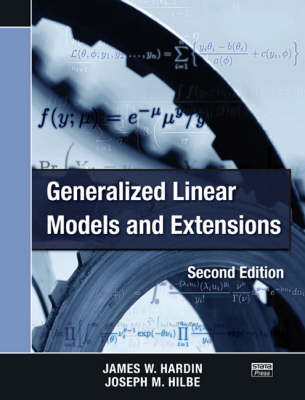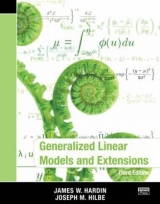
Generalized Linear Models and Extensions, Second Edition
Stata Press (Verlag)
978-1-59718-014-6 (ISBN)
- Titel erscheint in neuer Auflage
- Artikel merken
From the first edition:
Introduction
Origins and motivation
Notational conventions
Applied or theoretical?
Road map
PART I: FOUNDATIONS OF GENERALIZED LINEAR MODELS
Generalized Linear Models
Components
Assumptions
Exponential family
Example: Using an offset in a GLM
Summary
GLM Estimation Algorithms
Newton-Raphson
Starting values for Newton-Raphson
Fisher scoring
Starting values for IRLS
Goodness of fit
Estimated variance matrices
Estimation algorithms
Summary
Analysis of Fit
Deviance
Diagnostics
Assessing the link function
Checks for systematic departure from the model
Residual analysis
Model statistics
PART II: CONTINUOUS RESPONSE MODELS
The Gaussian Family
Derivation of the GLM Gaussian family
Derivation in terms of the mean
IRLS GLM algorithm (non-binomial)
Maximum likelihood estimation
GLM log-normal models
Expected versus observed information matrix
Other Gaussian links
Example: Relation to OLS
The Gamma Family
Derivation of the gamma model
Example: Reciprocal link
Maximum likelihood estimation
Log-gamma models
Identity-gamma models
Using the gamma model for survival analysis
The Inverse Gaussian Family
Derivation of the inverse Gaussian model
The inverse Gaussian algorithm
Maximum likelihood algorithm
Example: The canonical inverse Gaussian
Non-canonical links
The Power Family and Link
Power links
Example: Power link
The power family
PART III: BINOMIAL RESPONSE MODELS
The Binomial-Logit Family
Derivation of the binomial model
Derivation of the Bernoulli model
The binomial regression algorithm
Example: Logistic regression
Goodness-of-fit statistics
Interpretation of parameter estimates
The General Binomial Family
Non-canonical binomial models
Non-canonical binomial links (binary form)
The probit model
The complementary log-log and log-log models
Other links
Interpretation of coefficients
The Problem of Overdispersion
Overdispersion
Scaling of standard errors
Williams' procedure
Robust standard errors
PART IV: COUNT RESPONSE MODELS
The Poisson Family
Count response regression models
Derivation of the Poisson algorithm
Poisson regression: Examples
Example: Testing overdispersion in the Poisson model
Using the Poisson model for survival analysis
Using offsets to compare models
Interpretation of coefficients
The Negative Binomial Family
Constant overdispersion
Variable overdispersion
The log-negative binomial parameterization
Negative binomial examples
The geometric family
Generalized negative binomial
Interpretation of coefficients
PART V: MULTINOMIAL RESPONSE MODELS
The Ordered Response Family
Ordered outcomes for general link
Ordered logit
Ordered probit
Generalized ordered logit
Example: Synthetic data
Example: Automobile data
Unordered Response Family
The multinomial logit model
The multinomial probit model
PART VI: EXTENSIONS TO THE GLM
Extending the Likelihood
The quasi-likelihood
Example: Wedderburn's leaf blotch data
Generalized additive models
Clustered Data
Generalization from individual to clustered data
Pooled estimators
PART VII: STATA SOFTWARE
Programs for Stata
Syntax
Syntax for predict
Description
Options
User-written programs
Remarks
Tables
References
Author Index
Subject Index
| Erscheint lt. Verlag | 20.2.2007 |
|---|---|
| Verlagsort | College Station |
| Sprache | englisch |
| Gewicht | 816 g |
| Themenwelt | Mathematik / Informatik ► Mathematik |
| ISBN-10 | 1-59718-014-9 / 1597180149 |
| ISBN-13 | 978-1-59718-014-6 / 9781597180146 |
| Zustand | Neuware |
| Haben Sie eine Frage zum Produkt? |
aus dem Bereich



